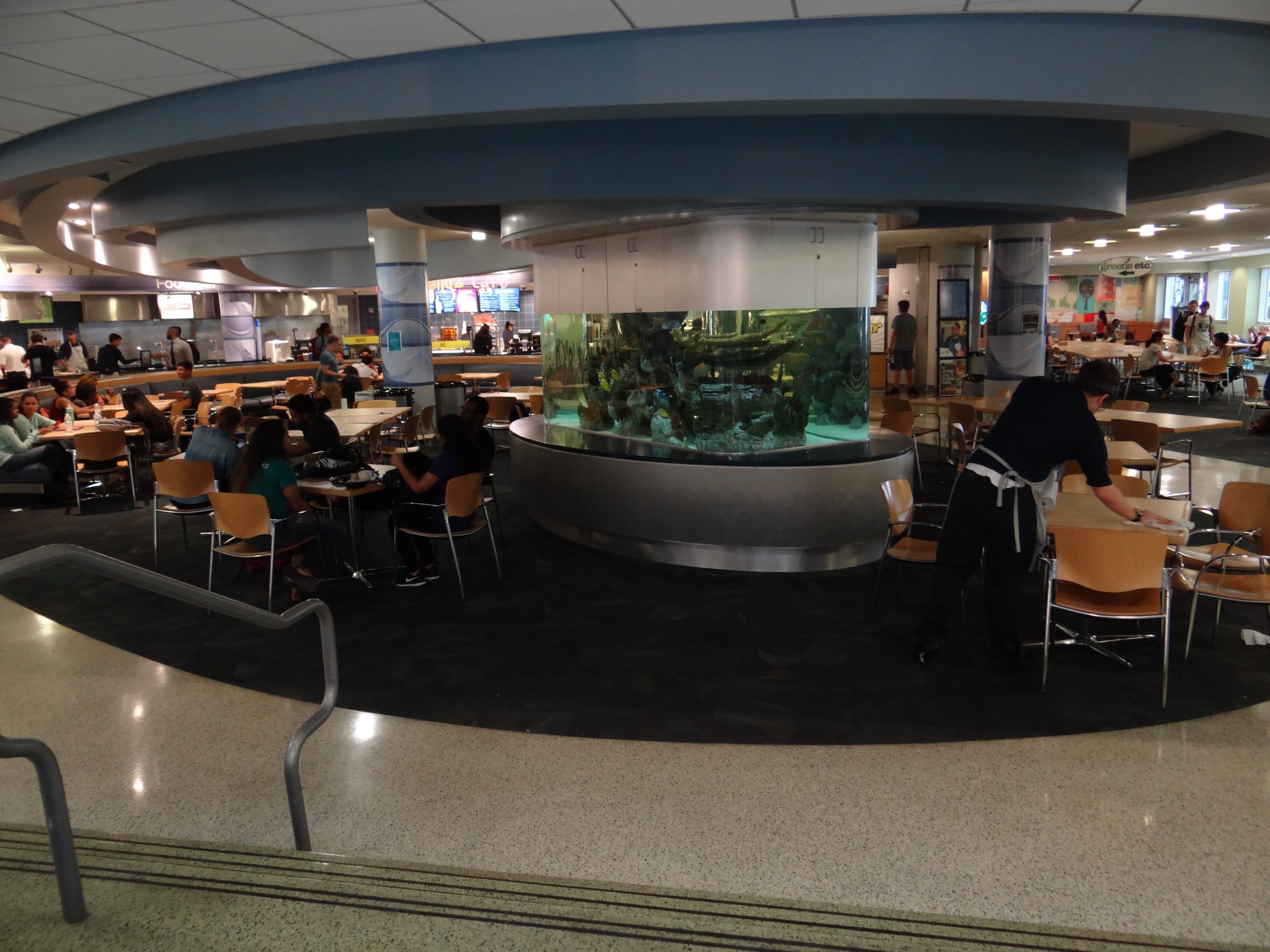For the past few weeks, students across campus have expressed their concerns to The Current regarding Shark Dining. Some mentioned long wait-times for food, unusually long lines and having no attendant available at registers.
“After eight or nine everyone is forced to go to the Flight Deck so it becomes over-crowded and they are always out of menu items,” said Jessica Hunter, freshman biology major.
All of these issues could tie into one of students’ main concerns: Shark Dining might be in need of more staff.
We spoke to Stefanie Furniss, director of operations for Shark Dining, who explained the mechanics of Shark Dining and their processes. In short, they work on improving any issue they may face based on sales history, analytics and customer response. Every semester, especially after a graduation, they use data collected during that year to establish a plan for the following year.
“At the end of every semester we look at the sales history of that semester against other semesters of previous years,” said Furniss. “It creates an average and a way to track the behaviors of the customers.”
This allows them to make improvements for the next semester or upcoming year.
This data analysis tends to be reliable but can still show inaccurate readings due to natural phenomena.
“It isn’t an exact science as Hurricane Irma did throw a huge wrench in our operations,” said Furniss. “We lost some employees due to financial obligations and other factors.”
Shark Dining runs on a 9-month operation process. Over the summer, the sales drop significantly and they tend to lay-off employees due to a lower demand than what is usually seen during the school year. During the school year, they work with their employees to create an availability based scheduling system.
“We have roughly 200 staff members, part-time and full-time employees, that change in frequency throughout the year,” said Furniss. “Based on hours of operations, we try to create shift patterns and accommodate student schedules [of part-time student employees] and full-time employee schedules.”
This school year has presented some challenges. With the largest incoming freshman class at NSU to date, Shark Dining had to estimate sales frequency to staff the locations around campus. On top of that, four new dining establishments were added this year: Chef’s Table, Roma, World Market and Innovation Kitchen. Furniss shared that since these new establishments had no past sales history to give Shark Dining an idea of how much staffing would be required, they based staffing on estimations. They also refreshed Juice Blends, Greens Etc. and Flight Deck with new menu items and updated the overall appeal.
“Sales history has a trend, but it’s not an exact science,” emphasized Furniss.
Customer response is one of the cornerstones of their work and Shark Dining has been trying to advocate for new ways to interact with their customers. With the creation of applications such as Txt2Solve and the Dining Surveys, they hope to gain more information about students’ experiences.
“Txt2Solve is an anonymous service that helps us narrow down or immediately react to something,” said Furniss. “When [customers] reach out immediately, we can pinpoint the root of the problem very quickly.”
Another application put into place are the online Dining Surveys.
“Compass, our parent company, uses [a specific] metric to administer these surveys,” said Harrison Davies, director of marketing and guest services at Shark Dining. “They are part of our operations and use the feedback we gain from that to get a grasp of the population. If several hundred people are saying one particular thing, it might mean we need to look into fixing that issue.”
In the future, Davies and Furniss said they plan to place these Dining Surveys in the UC Spine to have guests provide feedback on specific visits or overall experience at any dining establishment on campus.
These online Dining Surveys will be conducted until Nov. 30 at 11:30 p.m. This data will be analyzed and presented to Shark Dining in a concise report. They will be able to further analyze specific segments on an as-needed basis.
“We use the fiscal information, we use the surveys, we use the Nova plans from the partnership side, and we use all of these things for the big 10,000 ft view,” said Furniss. “From this, we build our hours and operations for the semester or year to come.”
While they focus on finding new ways for students to reach out to Shark Dining about experiences on campus, there are some old-fashioned ways that still “hold water” when it comes to customer concerns and feedback. For example, www.dineoncampus.com/nova is a resource with a feedback section to anonymously provide comments and pose questions or concerns directly to the source. Students can also opt to have in-person conversations with staffers about their concerns.
According to Davies, “The best avenue sometimes is the name-tag. You can always come up to anyone with a Shark Dining nametag with any comments or concerns you may have.”


